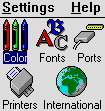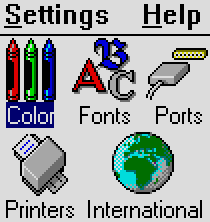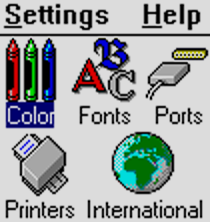|
|
Web Design
|
Browser scaling quality
Browsers have traditionally competed in having the most primitive and poor image scaling algorithms you could imagine. On this page you can test the scaling quality of your browser. On the screen the images should appear almost the same. If the circle is drawn in a broken line, the browser didn't do a good job scaling down. When printed out, the right-side circle should be more clear and sharp and pretty looking than the left-side image.
Downscaling
Pre-scaled:

|
This image has been pre-scaled down to 50x50 pixels using a proper scaling algorithm.
The disadvantage is that the original clarity cannot be restored.
|
Downscaled by browser:

|
This image is scaled down from a very large size to the proper size (50 x 50 pixels) by the browser.
The image should look like the one above, but when printing you should see the full resolution (the circle becomes sharper than the above one.)
Some browsers will scale the image down before upscaling it to printer resolution, which is just plain stupid.
|
Upscaling
Pre-scaled:

|
This is the original 50 x 50 pixel image.
|
Upscaled by browser:

|
This image is scaled up to exactly 4x size by the browser.
Some browsers will show exact pixels, others will try to interpolate (smooth) the upscaled version to hide the pixels.
Whether or not interpolation is a good idea or not can be debated. Personally I prefer interpolation when downscaling but not when upscaling by an integer amount (i.e. 2x, 3x or 4x size.)
|
|
Whereas I think it is quite obvious that interpolation is quite an advantage when downscaling any kind of image, it is far more tricky to decide whether to use interpolation when upscaling, and seems to depend on what type of graphics we are dealing with.
Especially when scaling up by an integer factor (2x, 3x, 4x, 5x size etc.) one can debate which solution is the better choice.
To illustrate the differences, here are the two different variations on how to upscale a small image.
|
 |
 |
Original images. |
 |
 |
Scaled up by repeating pixels.
It's obvious that the pixelated graphics are simply doubled in size and have retained its crispness. The photo looks less pleasant this way, as pixels have now become visible. |
 |
 |
Scaled up using interpolation.
With interpolation the pixelated graphics appear blurry.
The photo, though, now appears more pleasing as it relies less on pixel-to-pixel sharpness and more on smooth transitions. |
Website by Joachim Michaelis
|
|
|
|

